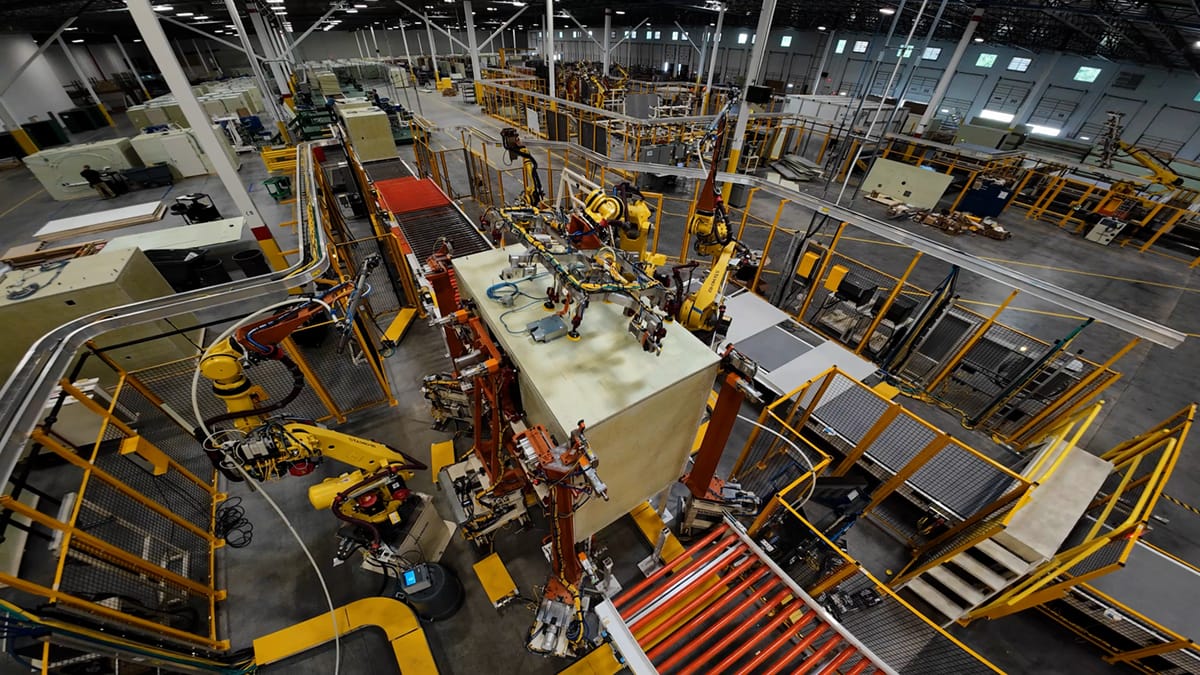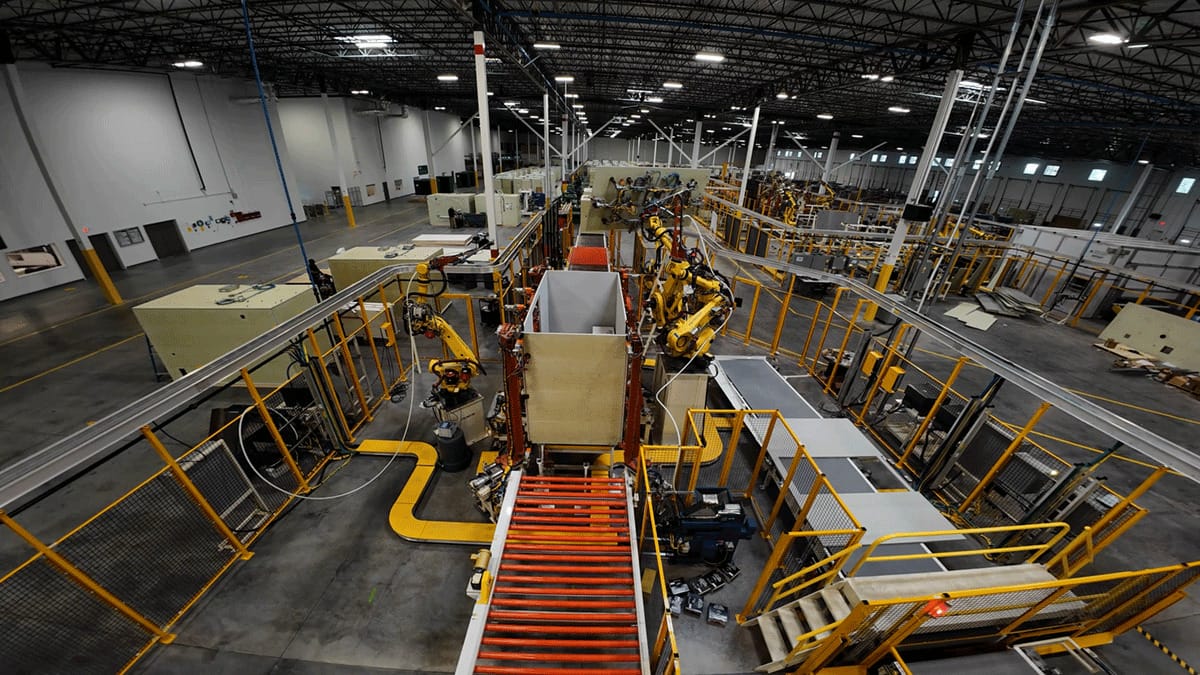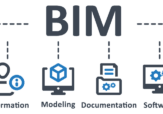Resia: Breaking All the Rules
Resia Manufacturing, a division of U.S.-based Resia, is now offering prefabricated bathroom and kitchen components to industry partners. Its hybrid fabrication facility produces more precise bathroom and kitchen components (modules) faster and at lower cost than traditional construction. Here’s how Resia Manufacturing does it.
Resia, formerly AHS Residential, is a vertically integrated real estate development company based in Miami, Florida. Its mission is to build modular multifamily buildings that address America’s affordable housing crisis. The company builds everything from three-story garden apartments to 12-story high-rise apartments, targeting essential housing in growing metropolitan areas.
The company is dedicated to using the latest technology and creating streamlined processes for more efficient building and increased value.

Creating the Right Environment
In 2023, Resia Manufacturing acquired a 252,000-square-foot factory in Fairburn, Georgia. Its goal was to create an automotive-inspired facility from the ground up for the prefabrication of bathroom and kitchen components for all construction modalities.
Hybrid fabrication, a term coined by Mitchell Sklar, P.E., director of manufacturing quality, certification & product development for Resia Manufacturing, offers an optimal balance of speed, cost efficiency, and regulatory compliance. The approach integrates prefabrication for high-impact components while maintaining traditional construction for structural flexibility. This strategy combines robotic assembly, traditional sub-assembly and rigorous quality assurance to enhance performance and reshape the future of housing development.
While robots are not new in the prefab module world, no one has been as successful, as quick as Resia Manufacturing. During the planning phase, the company engaged different integrators to design and implement an automated robotic system specifically for its needs.
“The integrators achieved 90% of the requirements,” Sklar says. “Nobody’s ever done this before.”
The first robots arrived in February 2024. In June, the plant was certified to do business in Georgia, Florida, and Texas. Six months later, the factory had produced 1500 bathroom and kitchen modules.
“Everyone wants to know how we did this so fast,” Sklar says. “It’s all about the people. Putting the right people with the right mindset together. In less than 18 months, we’ve accomplished something that most factories haven’t been able to do in 10 to 15 years.”

Rewriting the Playbook
The plant’s first phase is a fully automated dual assembly line, with 32 robots handling the assembly. The two parallel systems, one for kitchens and one for bathrooms, have the same setup. It all begins with the 110-inch glue line that laminates the panels with wall finishes (including wallpaper), floor finishes and ceiling finishes. Each panel is then cut to size using one of two 90,000 psi robotic water jets.
Next up is the first framing station, during which the floor and three walls are combined, followed by the vanity, tub, and toilet fixture installations. From there, the module goes to the second framing station where the fourth wall and ceiling are installed. That completes the automatic assembly piece of the process.
“Our panels are 12 feet long by 8 feet wide and each weigh roughly 400 pounds,” Sklar says. “Two people couldn’t pick those up. So, we have our robots do all the heavy lifting.”
Once production began, Resia Manufacturing tweaked the programming to improve the process. Every week, the factory reviews what it’s done at a Prefabricated Engineering Change Request Meeting. Workers provide input, and if something can be improved, they submit a change order request.
“It’s constant improvement on the line, which is what you’re supposed to have,” Sklar says.
During the semi-automatic phase, the pre-assembled electrical, mechanical, and plumbing systems are installed in five different stations. The installation process is similar for each kitchen and each bathroom.
Finally, each module is put through a series of quality assurance tests—a complete 100 psi air test, a 5-psi vacuum test, a water flood test, and a complete electrical/operational test.
Bathroom and kitchen components leave the factory at approximately a 95% level of completion. All the electrical components are plug-and-play for simple installation onsite.

Going Digital for Efficiency
“All our inventory is tracked electronically and stored in our Global Shop System,” Sklar says. Quantities are reviewed daily, and GSS flags us when it’s time to reorder more materials.”
Sklar compares the assembly line to a supermarket—each workstation is stocked with only the parts needed for its task.
This year, Resia Manufacturing upgraded its QAQC program. Rather than relying totally on workers to fill out forms, each tool connects to the digital systems via Bluetooth. The computer reads the values for each tool to tell if the installation was performed correctly.
Differentiating Itself
“The number one differentiator in our factory is how the robots work,” Sklar says. “No one’s been able to duplicate it. It’s a combination of people and automation that sets Resia Manufacturing apart.”
Robots build to a one- to two-millimeter tolerance, while traditional construction is built to a one- to two-inch tolerance. Robots also pre-mark the location of the fastener clips, which eliminates mistakes, eliminates about 10 steps from the process, and does all the heavy lifting, keeping workers safe.
“With robots, you get that same build consistently,” Sklar says. “It’s accurate and precise. Every component comes out the same.”
No framing studs are used during the fabrication of the walls. The Resia panels are self-supporting, fire-rated, composite assemblies that are only 1-1/4-inches thick, while traditional interior walls are 3-1/2-inches thick. For example, a Resia Manufacturing bathroom weighs about 1,000 pounds less than a traditional bathroom pod.
Installation is also faster. At the Golden Glades development, workers installed bathrooms every 45 minutes, an average of 41.5 bathrooms per week.
Resia has hard numbers to show the savings in costs and time. The company hired an independent consultant to compare the cost of their modular bathrooms and kitchens to traditional construction bathrooms and kitchens.
“Our product costs are roughly $3,000 to $4,000 less than the current pod offering,” Sklar says.
This gives Resia a competitive advantage, allowing it to manufacture and deliver products to the West Coast for less money than local modular manufacturers.
Learning As They Go
“We delivered our first project in Golden Glades and brought back the lessons we learned to the factory,” Sklar says.
The biggest lesson Resia learned was to test any outsourced fixtures, such as plumbing faucets for leakage, prior to installing the kitchens and bathrooms onsite. Ten to fifteen minutes of factory testing saves site time, money and aggravation. Now, anything purchased from a vendor—such as shower heads, toilets, and plumbing faucets—are subject to factory testing to ensure nothing leaks. For North City, Resia’s second project, the company added about 20 more QAQC checks before shipping the modules.
Emphasizing Education
Resia Manufacturing creates a visualization package of photos and videos to walk general contractors through the installation process. But the company goes far beyond that. It built a 3,000-square-foot, four-apartment training facility in the factory to show owners, developers, and general contractors how the units get assembled and the construction methods used.
“We call it the simulated working environment,” Sklar says. “It also serves as our hurricane shelter.”
This simulated working environment is also used as a testing center for new technologies or processes that Resia Manufacturing wants to implement. Mockups and prototypes for evaluation can be built offline without disrupting the workflow.
If the new product or process has merit, workers create detailed work instructions for implementation. Once Resia executives approve, and an implementation break point is established, the new strategy can be introduced into the production line, and the team can swap out the old system for the new system—even during mid-production.
Resia is currently undergoing this process to determine the best way to outfit the bathroom modules with showers rather than bathtubs.
Sklar hopes this simulated working environment will help to eliminate misunderstandings and myths about Resia’s innovative process and products. Some people consider a stud-free panel to be unstable or when they learn that Resia Manufacturing uses wallpaper, they automatically assume there is a mold source. Neither of these is based on fact.
“The real deterrent is lack of education,” Sklar says. “So, we need to purge the construction industry of 30 years of bad construction habits and stagnation and create smarter, cleaner, faster solutions.”
Advising Others
Many others have indicated the desire to duplicate the success Resia Manufacturing has achieved with their new factory.
“I share with them, invest $35 million and two and a half years, and you can replicate what we’ve built,” Sklar says. “They really need to understand there’s a substantial financial commitment to get to the top of the mountain.”
He also recommends they purchase the largest factory they can afford. The absolute minimum needed is 125,000 square feet. Resia’s 252,000 square feet is adequate most of the time, but some days it gets “tight.”
Another recommendation is for others to visit Resia Manufacturing’s facility and view the factory line operation themselves.
Moving Forward
Earlier this year, Resia Manufacturing opened the factory to all developers and owners nationwide, rather than using it for the manufacture of products for its developments exclusively. To accommodate the differences in footprint size of each developer, Resia Manufacturing plans to index its production line. This will allow the assembly line conveyors to accommodate multiple sizes of bathrooms and kitchens.
Meanwhile, Resia will continue to innovate and break the rules to remain at the forefront
“We’re not just building bathrooms and kitchens—we’re building proof,” Sklar says. “Offsite isn’t about chasing myths. With the right discipline and innovation, it’s about reshaping how housing gets built—smarter and faster than ever before.”
About the Author: Shari Held is an Indianapolis-based freelance writer who has been covering the construction industry for more than 20 years.
More from Modular Advantage
How LINQ Modular Innovates to Bring Modular To The Market in the UAE and Beyond
LINQ Modular, with an office and three manufacturing facilities in Dubai, is a modular firm based in United Arab Emirates. The company is on a mission: to break open the housing and construction markets in the Gulf Cooperation Council (GCC) area with modular.
ModMax: Redefining Modular Construction with Confidence and Precision
ModMax was born out of frustration—frustration with five persistent pain points in modular construction: Permitting bottlenecks. Production delays. Rigid designs. Disconnect between “the office” and the field. Lack of transparency and communication.
LifeArk: Disaster-Resilient Housing from Recycled Plastic and 100-year-old Technology
Wee compares LifeArk’s housing units to Yeti coolers, as they are built similarly. Each component takes 15 to 20 minutes to manufacture, has an R-value of 40, and includes molded slots and chases for wiring, plumbing, fire sprinklers, and other utilities.
Building the Future of Modular Edge Infrastructure
The edge data center market is expanding rapidly, driven by the surge in AI workloads, IoT adoption, and the need for localized compute power. In these environments, sustainability, scalability, and reliability are non-negotiable. Cooling is among the most complex challenges for operators—and one of the most decisive factors in long-term success.
Accelerating Light-Gauge Steel Construction: A Semi-Automated Digital Workflow for Off-Site Projects
For construction professionals, the message is clear. By adopting semi-automation and digitalization, companies can deliver projects faster, more accurately, and more profitably, while also building stronger collaboration across teams. The approach is not about replacing people with machines, but about empowering people with better tools and processes.
Why Modular Data Centers Are Gaining Momentum
Artificial intelligence, high-performance computing, and edge applications push the limits of traditional “stick-built” data centers. They take years build, often struggle with high density workloads, and aren’t optimized for deployments near end users. Modular data center platforms are purpose-built to address these challenges, offering flexibility and scalability to adapt to evolving technologies, while opening new opportunities for the modular construction industry.
Supply Chain Innovation in Action: 5 Habits Every Modular Leader Should Practice
By applying these principles to supply chain practices — collaborative planning, strategic procurement, scenario modeling, digital tools, and transparent forecasting — construction leaders can build value chains that are not just efficient and agile, but truly innovative.
Exploring the Role of Modular Integrated Construction (MiC) in Advancing Circular City Principles – A Survey of Stakeholder Perspectives
The survey findings highlight the significant potential of Modular integrated Construction (MiC) in advancing the development of circular cities. By reducing costs, accelerating construction timelines, and minimizing waste generation, MiC offers a promising approach to sustainable urban development.
The Use of MS POLYMER™-Based Sealants and Adhesives in Modular Building
These products combine flexibility and elastic recovery with excellent adhesion to different substrates and have already shown their usefulness in traditional construction. Now it’s time for them to be put to use in the modular construction industry.
From BIM to Execution: Turning a “Pretty Picture” into a Single Source of Truth for Off-Site Construction
When implemented properly, BIM becomes the company’s digital backbone: connecting teams, standardizing information and transforming data into actionable insights. It is the key to achieving lean, predictable operations where all phases – design, planning, procurement and project execution are empowered by a single source of truth.










